At a recent practice session one of the parents of one of the kids I coach took some photos. It just so happens that this parent, Derek Bradley, is a professional photographer. The photos he took were remarkable, so I’m hoping he’ll feel the urge to take more in the future! Anyway, with such good photos, I decided I had no choice to put an article together that used some of them. So this article will cover several topics because we had a lot going on that day.
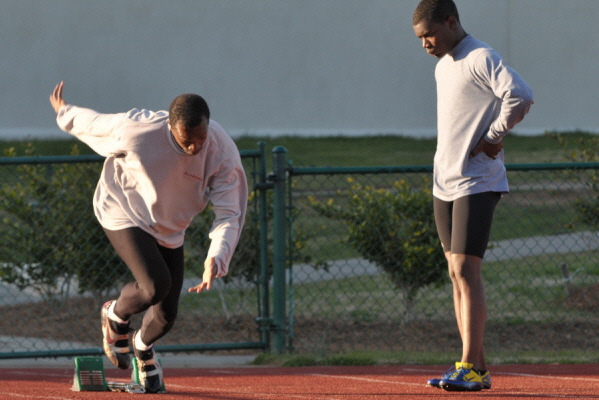
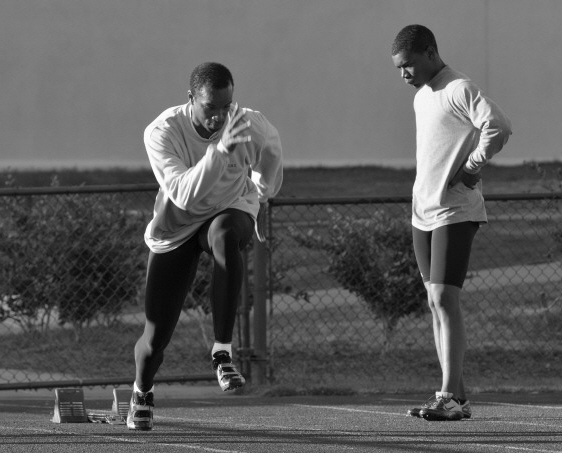
In these two photos Coach Byron Gibson (A 2006 graduate of Alabama who currently trains with me) shows Malcolm Nunley of Southeast Raleigh High School how to come out of the blocks. In the photo on the left, Byron demonstrates how to push off the pedals, with a swooping arm swing, keeping the back low, without raising up the torso too soon. In the photo on the right, Byron has taken his first step, and is now demonstrating the importance of high knee lift in the initial steps out of the blocks. Notice how “forward” everything is in this photo. Byron’s arms, hands, knees, feet, shoulders are all driving forward with no lateral motion. The high knee lift enables him to maximum the length of these early strides without extending the foreleg in front of the hips.
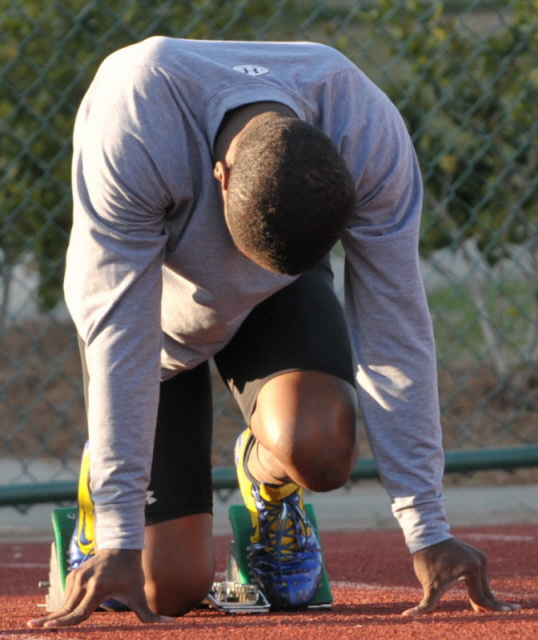
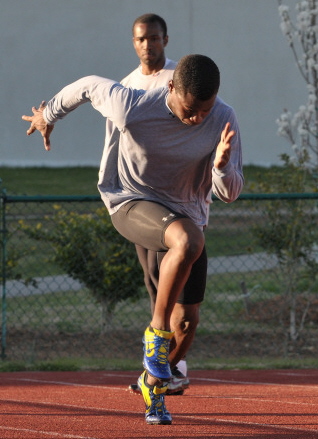
In these two photos, Malcolm tries to implement Byron’s lessons. In the photo on the left, Malcolm settles into “mark” position, keeping his head and eyes facing downward, making sure the spike plate of each shoe is gripping its pedal, with the toe of each foot touching the track, shoulders rolled forward, fingers upraised behind the starting line. In the photo on the right, Malcolm powers out of the blocks under Byron’s watchful gaze. Like Byron, Malcolm is trying to maximize his stride length by lifting his knees high while keeping his torso pushing down over his thighs. Also, the swooping arm swing is important for creating acceleration when coming out. The arm swing also helps prevent popping up too soon.
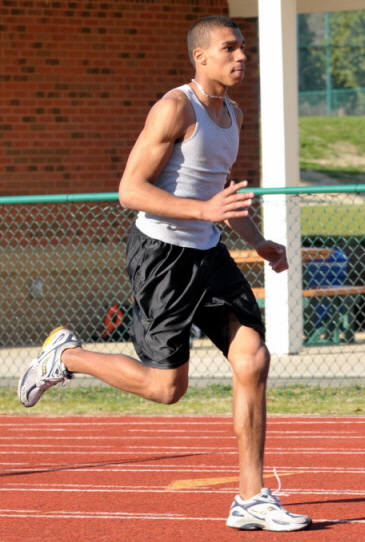
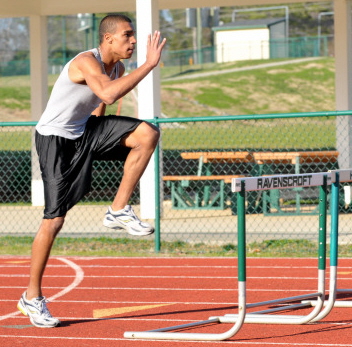
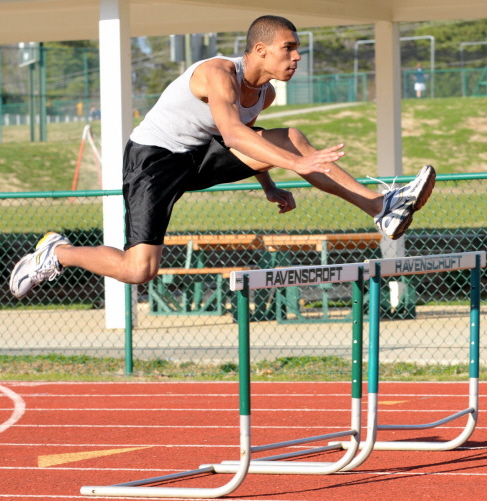

In this photo sequence, Anthony Colon of Raleigh Broughton High School is doing a hurdling drill over 30-inch barriers. Emphasis is on running over the hurdle as opposed to “prepping” for the hurdle by standing up too tall in the last step into the hurdle. Emphasis is also on driving the trail leg forward off the ground, not allowing it to lag or pause immediately after take-off. In the photo on the far left, Anthony is approaching the hurdle, focusin on running on the balls of his feet. In the next photo, he drives into the hurdle with his lead leg driving from the knee. Lead arm drives upward with the knee, and the ankle of the lead leg remains dorsi-flexed. In the third photo, Anthony is on top of the hurdle. Ankle remains flexed. Lead foot opens up downward, not straightforward. Knee of trail leg begins to whip to the fornt. Both legs are in a running position. Torso pushed down over the lead thigh to prevent too much air time. Lead arm whips downward in unison with the trail leg whipping forward. In the last photo, Anthony is descending off the hurdle. Ankle remains flexed. Knee of the trail leg leads the way as that leg drives to the front. He is coming out of his lean from the torso, yet the torso remains pushing forward. Both arms return to running position.
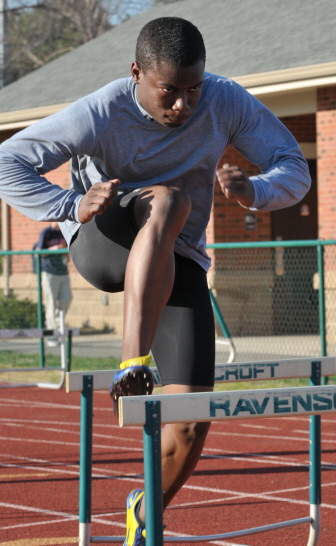

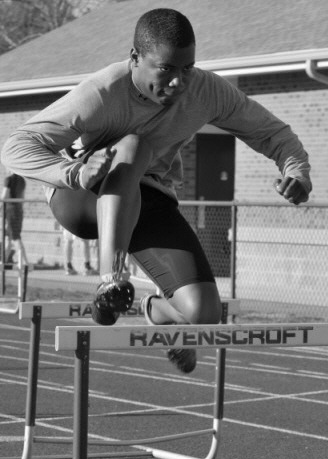
In these photos, Malcolm Nunley is doing the same drill Anthony was doing in the above photos. Here, Malcolm is specifically trying to address his habit of kicking out the lead leg too soon, and too far. This habit causes an imbalance where the hips twist and the trail leg comes around in a wide arc and never makes its way all the way to where the knee is facing the front. Malcolm here is clearing 30-inch hurdles, trying to force himself to drive with the knee, not the foot. The key word that Coach Byron kept yelling to Malcolm was “Down!” Which meant that he wanted Malcolm to step over the hurdle, to step down off the hurdle, instead of allowing that foot to sail outward. It’s a very difficult habit to break, although Malcolm is having success with it in this drill.
© 2009 Steve McGill
To see more of photographer Derek Bradley’s work, check out his website: flashphotosonline.com
